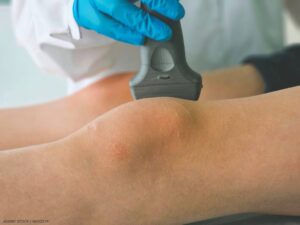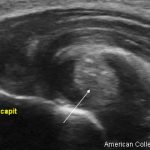 Rheumatology is old school medicine. Clinical history and physical exam reign supreme. Tests provide clues, but rarely definitive diagnostic answers. That’s why I love it, and that’s why none of my friends picked it.
Rheumatology is old school medicine. Clinical history and physical exam reign supreme. Tests provide clues, but rarely definitive diagnostic answers. That’s why I love it, and that’s why none of my friends picked it.
Affinity for the old school aside, ultrasound has emerged as a valuable tool for the rheumatologist, especially in cases where the diagnosis is unclear. It’s a billable point-of-care tool with the potential to rapidly and positively impact patient care. Several fellowship programs are incorporating ultrasound into training, and the number of practicing rheumatologists utilizing it in clinic continues to grow.
Just weeks away from ACR Convergence 2024, I had the pleasure of chatting with some true experts about the past, present and future of ultrasound in rheumatology:
Jemima Albayda, MD, RhMSUS, associate professor of medicine, director of the rheumatology fellowship program and director of the Musculoskeletal Ultrasound and Injection Clinic in the Division of Rheumatology, Johns Hopkins University School of Medicine, Baltimore, appreciated the value in ultrasound early on and has built her career around its education and utilization.
Eugene Kissin, MD, RhMSUS, clinical professor of medicine and program director of the rheumatology fellowship program, Chobanian & Avedisian School of Medicine, Boston University, co-founded the UltraSound School of North American Rheumatologists (USSONAR) and offered decades of insight.
And last, but not least, Minna Kohler, MD, RhMSUS, director of the rheumatology musculoskeletal ultrasound program, Massachusetts General Hospital, Harvard Medical School, Boston, is the current president of USSONAR and shared excitement about what’s coming down the pipeline.
Interview with the Experts
The Rheumatologist (TR): How did you get involved with ultrasound? What interested you in it in the first place?
Dr. Albayda (JA): I basically started in fellowship. When I was a chief resident, I had matched at Johns Hopkins for fellowship and was worried about what I would do when I got there. I didn’t know much about rheumatology, but had been hearing about new developments in rheumatology ultrasound. Since it was my chief year, I had money for continuing medical education (CME), and I found an ultrasound course in Brussels. You clearly don’t learn ultrasound from a one-weekend course, but it sparked my interest.
When my first year of fellowship rolled around and there was an opportunity to complete training with the USSONAR, I took it. It was a really good way of learning ultrasound longitudinally. When I finished, I was well trained and joined the Hopkins faculty with another skill under my belt.



